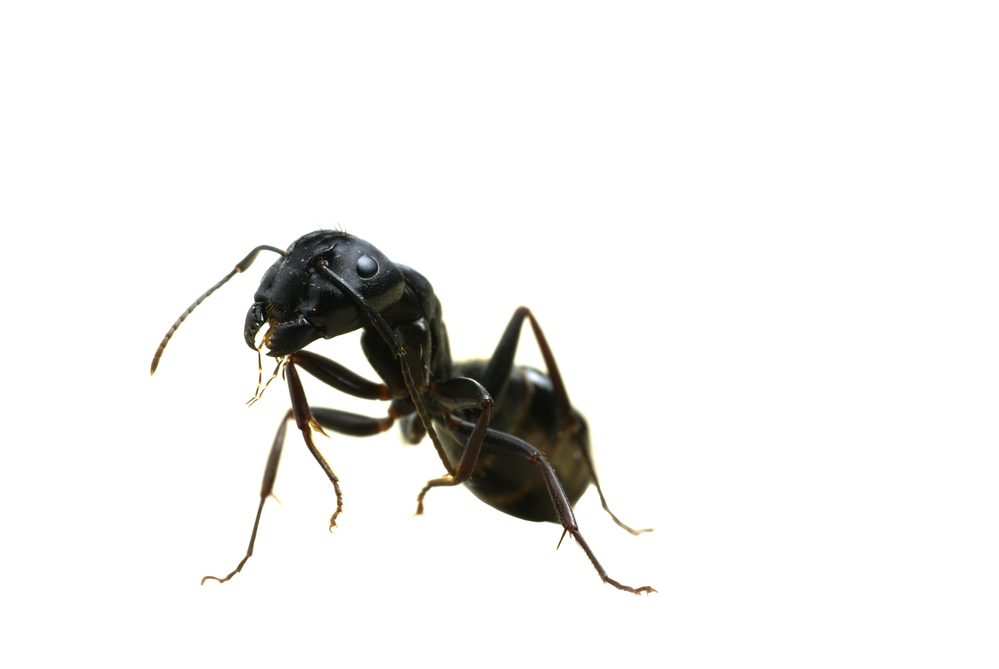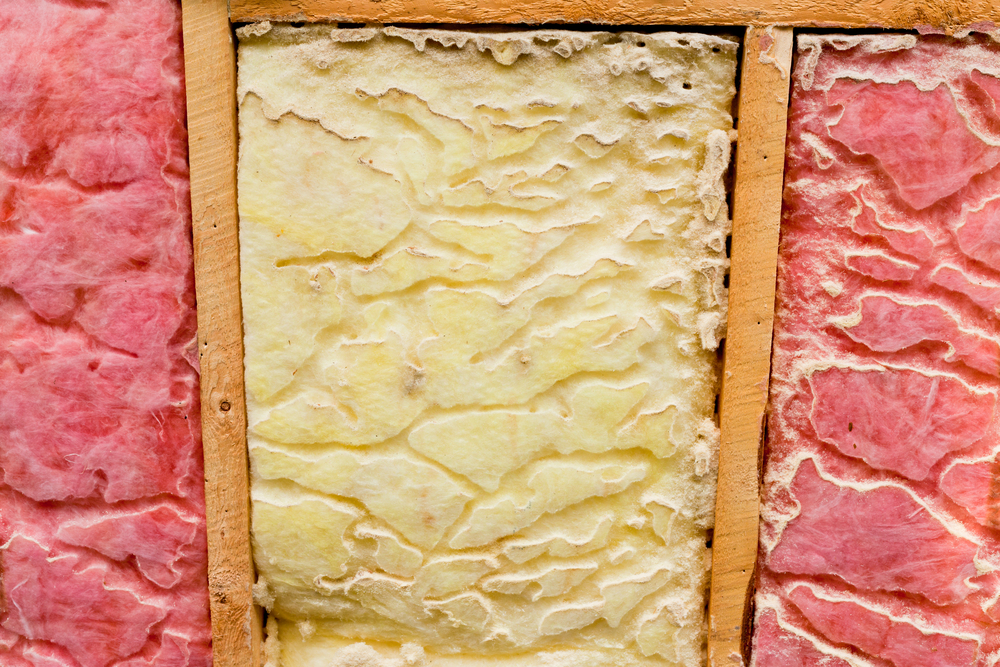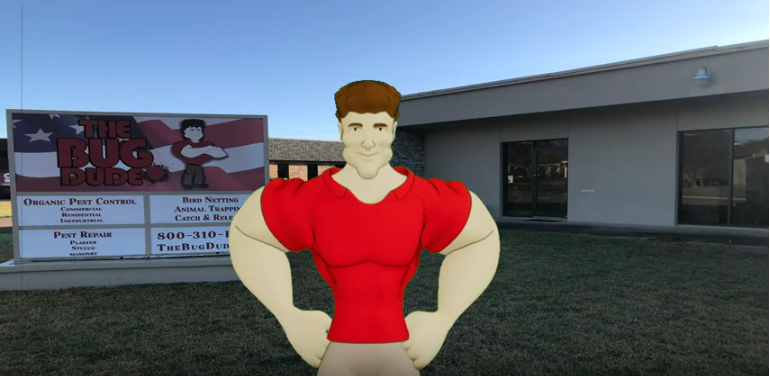If someone were to say “carpenter,” what would be your first thought? With spring cleaning and home repairs on the minds of many, there’s a good chance you would be thinking of a handyman. If you’re really into music, maybe your mind would go to the 70’s band The Carpenters (and aptly have the song “Rainy Days and Mondays” stuck in your head as spring showers find their way across north Texas). Or with Easter on its way, maybe you would reflect on a certain religious carpenter. But while all of these carpenters bring with them a sense of creation, there’s another carpenter, one notorious for destruction, about to get your attention: the carpenter ant.
This particular ant is well-known as a wood-destroying pest, and anyone who has had to contend with it can tell you that battling a carpenter ant infestation is a sure-fire way to ruin your productive spring plans. These pests can cause both aesthetic and structural damage to your home, while simultaneously making a mess of your floors and windows and making your skin crawl as hundreds of flying ants suddenly emerge from hiding within your house. Fortunately, the experts at The Bug Dude are here to help with all the troubles carpenter ants can create, and get you back to singing a happier song of spring.

Fast Facts About Carpenter Ants:
- Appearance: They are between 3/8” and 3/4” long, red or black and red in color, and have a segmented body with bent antennae. During mating season, some will have semi-transparent yellowish-brown wings that are around the same size as their body.
- Nesting Behavior: These ants create two types of nests: parent nests and satellite nests. Parent nests are generally larger and will always be found in moist areas. Satellite nests are created near the parent nest and contain worker ants, pupae, and mature larvae. The worker ants in satellite nests will move regularly between the parent and satellite nests. Since satellite nests do not contain ant eggs, these nests can occur in dry locations such as wall voids, hollow doors, and undamaged wood.
- Indoor Habitat: When these ants make their nests indoors, they can be found in moist or decayed wood. A few common locations are: in bathrooms (behind tiles and around showers and sinks), in kitchens (around sinks and dishwashers), under roofing, under subfloor insulation, in wall voids, in hollow doors, in foam insulation, window and door frames, plumbing voids, and any wood supports in contact with soil.
- Outdoor Habitat: Commonly, outdoor nests will be found in hollow trees, decaying trees or logs, tree roots, boards or firewood left on the ground, fence posts, window areas, moisture-damaged wood siding, and any areas where wood or soil touch the foundation of a home or other outdoor structure.
- Diet: They consume mostly proteins and sugars. Some common food sources are meat, pet food, honey, living and dead insects, fresh fruits, and sugary sweets. They do NOT consume wood.
- Signs of an Infestation: There are two telltale signs of a carpenter ant infestation: swarmers and frass. Swarmers are large, winged carpenter ants, which will often be found around windows and doors during the spring and early summer as they attempt to reproduce and create a new colony. Frass is the term for the sawdust-like substance that the ants push out of their nests as they excavate; it is generally seen around baseboards and windowsills and can sometimes be mistaken for a pile of dirt.
- Danger: The biggest danger these ants provide is to the wood in, on, and around your home. Carpenter ants do not sting, but they can bite, and will do so in defense if their nest is disturbed. As carpenter ants have powerful jaws, if you are bitten, you’re bound to feel it, and it could even break the skin. Generally, a bite will result in redness, mild swelling, and a burning sensation that can last up to a few days.
- Damage: Though the most notorious wood-destroying insect has to be termites, carpenter ants are more than capable of causing structural and aesthetic damage to your home, and are well-known as a highly destructive pest in their own right.

How do you Prevent Carpenter Ants?
The most important thing to keep in mind with prevention is to reduce moisture around your home. Here are a few tips to help prevent a Carpenter ant infestation:
- Maintain regular pest control with The Bug Dude!
- Fix any plumbing leaks, roof leaks, and drainage issues
- Replace any water or insect damaged wood
- Make sure attics and crawl spaces are well ventilated
- Keep firewood away from the house
- Remove logs and stumps close to the home
- Keep trees and shrubs trimmed away from the house (don’t forget to remove any branches that hang over the roof) and electrical lines
How do you Eliminate Carpenter Ants?
The first trick to eliminating a carpenter ant infestation is inspection. Before any treatment can begin, the home and yard need to be inspected by a pest control technician for signs of the ants and their nests so that the ants can be identified, and their source(s) located. Keep track of any ants, ant swarmers, and frass piles you have seen and exactly where you have seen them and inform your technician when they arrive; whenever possible, leave dead ants and frass piles undisturbed for your technician to evaluate. Carpenter ants are known to be a difficult pest to eliminate, in part because they make their nests in hidden locations, and in part because they require specialized products to effectively treat for them. They are not a pest you could or should try to treat yourself. In fact, using the wrong treatment can make it even more difficult to eliminate the infestation due to detrimental product interaction, and will lead to a longer and more difficult battle for you and your technician. Instead, at the first sign of a carpenter ant problem, call The Bug Dude at 817-354-5350 or 1-800-310-BUGS (2847) and set up an appointment to get an expert technician out to your home before the infestation, and damage, escalates.

What About Carpenter Ant Damage?
Eliminating the carpenter ants themselves is the obvious first step when dealing with an infestation, but what happens once the ants are gone? Unlike ghost ants, pharaoh ants, or even fire ants, the effects of carpenter ants can plague you for years to come. When you look out your window at a beautiful sunset, the glaring damage to your windowsill may be all you see. When you grab a glass of sweet tea and sit in your yard admiring your garden, the ever-growing spot of rotting wood on your siding may sour the view. Every time you shower, you may anxiously keep your eyes fixed on the tunneled-out baseboard and pray you don’t see an ant crawl through. And it almost goes without saying, the countless sleepless nights spent worrying over all of the unseen damage. Whether the issue is aesthetic, preventative, or functional, the damage done by carpenter ants is no laughing matter and the sooner it’s dealt with, the quicker you can put the whole ordeal behind you.
Though it may seem that ignoring the damaged areas is fine for a while since you have had the infestation treated, you are actually just leaving a “welcome” sign on your home for wood-destroying pests and several other pests that like to make old carpenter ant tunnels into their home (like the acrobat ant). Once an area is damaged it is more susceptible to future attacks, plain and simple. So what do you need to do? As soon as the active infestation has been eliminated, it’s time to go to work on fixing the known damaged and conducive areas. Fortunately, when you have a Bug Dude technician at your home, you have someone with the experience to locate the problem areas, the knowledge of how to repair them, and a company who will stand behind their work.

What The Bug Dude Can Do For You
It’s bad enough having your home overrun with ants, but knowing that these ants have been gnawing away at the wood inside your home is enough to keep you up at night. One of the first thoughts most people have when faced with a wood-destroying insect is: how bad is the damage to my house? Fortunately, The Bug Dude is here to help alleviate the stress associated with a carpenter ant infestation.
When it comes to repairing the damage done from carpenter ants excavating parts of your home for their nests, or repairing conducive areas where wood is rotting from the past year’s rains, you don’t need to look any farther than The Bug Dude to find a solution. With technicians able to assist in anything from purely functional fixes, to preventative, to aesthetic, The Bug Dude offers a one-stop-shop approach to dealing with these pests. There’s no need to worry about finding a carpenter, repair man, or contractor to help you deal with the repair needs you discussed with your pest control technician. There’s no need to try to remember the exact areas your technician pointed out or try to explain what the issues are to yet another person you have to hire to get your home back in order. Instead, you can rest easy knowing that you have a technician and a company taking care of your home that is an expert in not only treating for pests, but fixing the issues they create.
But what are some of the things The Bug Dude can do to help with carpenter ant damage or prevention? Sometimes the fix is something simple, like installing door sweeps to help mitigate ants getting in. Sometimes the project is more extensive, like repairing or replacing water-damaged wood on the exterior of your home to help prevent that area becoming a target for carpenter ants or even termites. Other times, the damaged area could look alright on the exterior, but be tunneled out on the inside, requiring an expert inspection to locate and a skilled hand to repair. Whatever the situation is, The Bug Dude is here to help, with excellent service, decades of experience, affordable prices, and warranties for both treatments and repairs. So what are you waiting for? Give The Bug Dude a call today at 817-354-5350 to set up an appointment with one of our specialists so you can rest assured that your carpenter ant battle hasn’t “Only Just Begun.”
Further Reading:
“Termites vs. Carpenter Ants” – Alissa Breach, The Bug Dude Blog
“Spring, and Carpenter Ants, are in the Air” – Alissa Breach, The Bug Dude Blog
“Carpenter Ants” – Wizzie Brown and Roger E. Gold, Texas A&M AgriLife Extension
“Carpenter Ants” – Jeffrey Hahn and Stephen Kells, University of Minnesota Extension
Author Bio: Alissa Breach has been gaining knowledge and experience around pest control concerns over the last 12 years while working for Mid-Cities Pest Control. She has a creative writing BA from UW-Madison and is always pursuing new and interesting writing projects.




